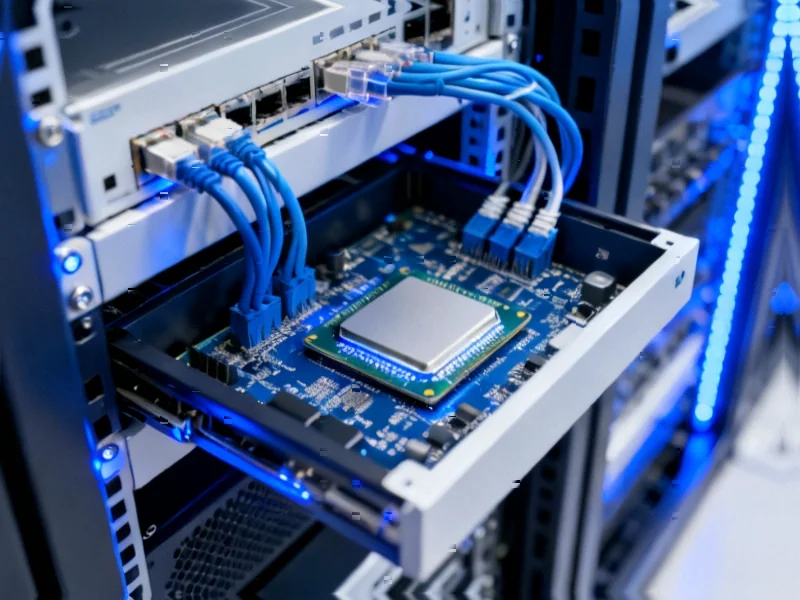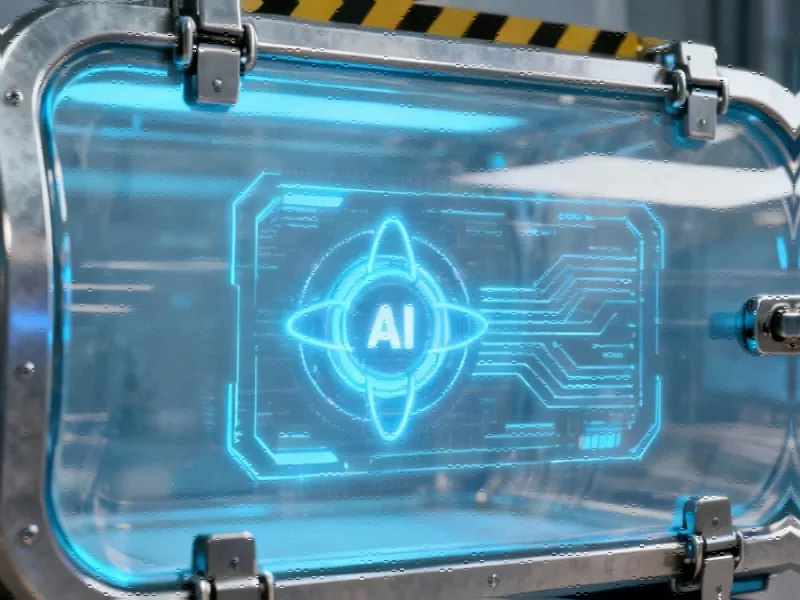According to DCD, Nvidia unveiled its next-generation BlueField-4 data processing unit at the GTC event in Washington, DC, featuring 800Gbps throughput and six times the compute power compared to BlueField-3. The DPU, originally announced in 2021 with a planned 2024 launch, is now scheduled for 2026 as part of Nvidia’s Vera Rubin platform. CEO Jensen Huang described BlueField-4 as “purpose-built for the gigascale AI era,” with partners including CoreWeave, Oracle Cloud Infrastructure, and Palo Alto Networks joining the ecosystem. The announcement also included the ConnectX-9 SuperNIC, capable of 1.6Tbps per GPU with enhanced programmable IO capabilities. This strategic delay raises important questions about Nvidia’s roadmap execution and the evolving AI infrastructure landscape.
Industrial Monitor Direct offers top-rated ip67 rated pc solutions designed for extreme temperatures from -20°C to 60°C, the #1 choice for system integrators.
Table of Contents
The Strategic Importance of DPUs in Modern AI Infrastructure
Data processing units represent a fundamental shift in how we architect computing systems for artificial intelligence workloads. Unlike traditional approaches where CPUs handle both computation and infrastructure tasks, DPUs offload networking, storage, and security functions to specialized hardware. This architectural innovation becomes increasingly critical as AI models grow exponentially in size and complexity. The AI industry is rapidly approaching trillion-parameter models that require unprecedented data movement efficiency. By dedicating specialized silicon to infrastructure tasks, companies can achieve significantly better performance per watt and reduce the overhead that traditionally plagues large-scale AI deployments.
Competitive Implications and Market Timing Challenges
Nvidia’s two-year delay from the original 2024 timeline to 2026 creates both strategic risks and opportunities. Competitors like Intel with its IPU (Infrastructure Processing Unit) and AMD with its acquisition of Pensando have been aggressively pursuing this market segment. The extended timeline gives these competitors valuable breathing room to establish footholds in cloud providers and enterprise accounts. However, Nvidia’s integrated approach—combining BlueField-4 with its Vera Rubin GPU platform and Spectrum-X networking fabric—creates a compelling ecosystem advantage that standalone DPU providers cannot easily match. The question becomes whether the market will wait for Nvidia’s integrated solution or adopt interim solutions from competitors.
Technical Innovation and Performance Claims
The performance claims for BlueField-4 are substantial—800Gbps throughput and six times the compute power of its predecessor. This level of acceleration suggests significant architectural improvements beyond simple process node scaling. The integration with ConnectX-9 SuperNIC, offering 1.6Tbps per GPU, indicates Nvidia is addressing one of the biggest bottlenecks in large-scale AI training: inter-GPU communication. The ability to support “four times larger clusters” than BlueField-3 suggests major improvements in scalability and fabric management. However, the real test will come in real-world deployments where software ecosystem maturity and developer adoption determine actual performance gains.
Ecosystem Development and Implementation Challenges
Nvidia’s explanation for the delay—needing time to “prepare the broader ecosystem”—highlights a critical challenge in advanced semiconductor development. Building the hardware is only half the battle; creating the software, tools, and partner integrations required for widespread adoption often proves more difficult. The transition to DPU-accelerated infrastructure requires significant changes to operating systems, virtualization stacks, and management tools. Major cloud providers and enterprises need time to redesign their infrastructure software stacks to fully leverage DPU capabilities. This ecosystem development challenge explains why Nvidia is announcing products years before availability—they need to give the market time to prepare for architectural shifts.
Industrial Monitor Direct manufactures the highest-quality warehouse management pc solutions designed with aerospace-grade materials for rugged performance, rated best-in-class by control system designers.
Future Outlook and Industry Impact
Looking beyond BlueField-4 to the already-announced BlueField-5 for 2028, Nvidia is clearly committing to a long-term DPU strategy. This sustained investment suggests that data processing offload will remain a cornerstone of AI infrastructure for the foreseeable future. The integration of DPUs with GPUs and specialized networking creates a vertically optimized stack that competitors will struggle to match. However, the success of this strategy depends on continued AI market growth and the willingness of cloud providers and enterprises to adopt Nvidia’s complete infrastructure vision. As AI models continue to grow in complexity and size, the efficiency gains from dedicated infrastructure processing could become increasingly decisive in competitive AI deployments.




